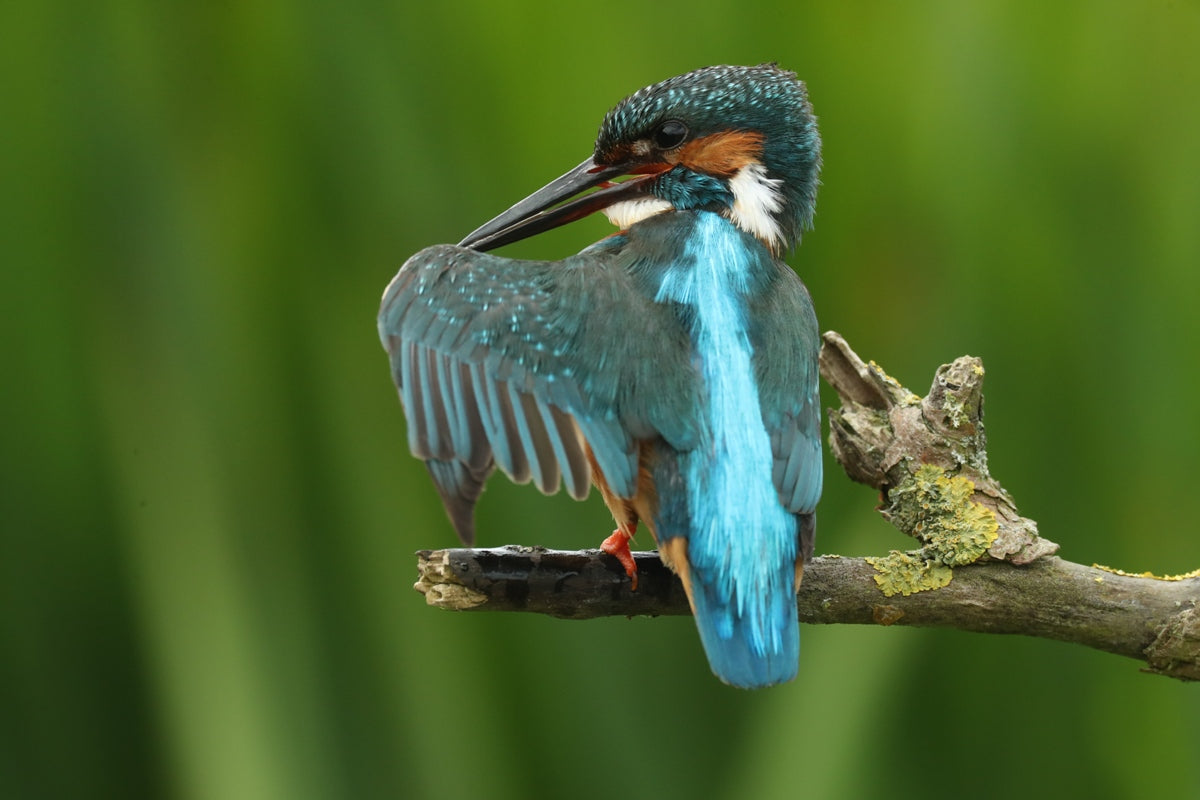Common kingfisher (alcedo atthis)
Just 12cm high with strident blue plumage and the flying-style of a speeding bullet, a kingfisher can really pack a punch. But in spite of all its dazzling brilliance, it is a deeply secretive bird. As a wildlife artist, I made it my mission to find out more. I built an artificial nest box and watched as a kingfisher pair raised their chicks inside. Here are five of the fascinating facts I learned.
1. Kingfishers inspired Japanese bullet trains
Kingfishers fly low and straight like bullets, reaching up to 25 miles per hour, but it's not their speed that excites scientists; it's their beaks. Sharp, pointed, and so long that they make up a third of a kingfisher's height, these beaks slice soundlessly through water meaning kingfishers can dive into pools without alerting fish. Engineers working on Japan's high-speed bullet train copied the shape of this beak to prevent sonic boom whenever these fast-moving trains enter a tunnel.
2. It's all in the beak: Kingfisher beaks help tell the sexes apart
Males and female kingfishers are so similar it is hard to tell them apart. The easiest way, if you can get close enough to see it, is the fact that the lower bill of a female's beak is orange, as if she’s applied a streak of lipstick. The chicks don't develop this colouring until they are almost a year old, so youngsters are almost impossible to tell apart.
3. Kingfishers don't actually like each other
Kingfishers are solitary birds and have to overcome a natural aversion to one another in order to come together to breed. Their courtship can have an underlying tension as they move awkwardly around one another. Even the male's mating poise mirrors its aggressive stance.
4. Kingfisher chicks are ugly
Pink and bald, kingfisher chicks are particularly ugly when they hatch. At just one inch-high, they sit bolt upright, like baby pterodactyls, using each other as props to balance against. This interconnection keeps them warm and dry whilst the upright posture helps keep their tiny bodies off the dirt of their nest floor. Unlike many other bird species that maintain a clean nest by removing their chick’s faecal sacks, kingfisher nests can be filthy. This is also the reason why their flight feathers don't grow until a week before they fledge. But when this blue and orange plumage finally emerges, these ugly ducklings transform into stunning beauties.

5. Kingfisher chicks have fluorescent beak tips so their parents can find them in the dark
The length of a kingfisher’s beak can be something of a hindrance when it comes to feeding the chicks in the pitch black of an underground nest. But these birds have an ingenious answer to this problem: the chicks have a white tip to their beaks and their parents have a white flash on each side of their face, providing a luminous visual clue.


That's five things you probably didn't know about kingfishers, but there are more (like did you know these birds are actually brown in colour and that it's just the way the light refracts off their feathers that gives them their beautiful colour?) so do take a look through my stories of watching these birds and read more about how you can support any in your area:
Read More:
https://www.robertefuller.com/diary/when-kingfishers-disappear-underground-kingfisher-art-study/
https://www.robertefuller.com/diary/5-challenges-kingfishers-face-how-to-help-them/
https://www.robertefuller.com/diary/how-to-see-kingfishers-kingfisher-art-studies/














